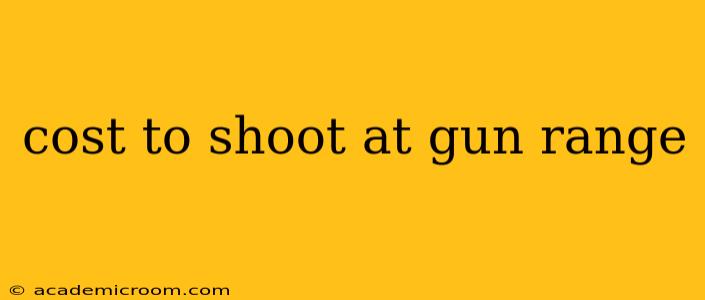Going to a gun range can be a fun and safe way to practice your shooting skills, learn firearm safety, or simply enjoy the experience. However, the cost can vary significantly depending on several factors. This guide breaks down the expenses you can expect to encounter, helping you budget your next trip to the range.
What Factors Influence Gun Range Prices?
Several key factors influence the overall cost of a gun range visit:
-
Location: Gun range prices vary significantly based on location. Ranges in densely populated urban areas tend to be more expensive than those in rural areas due to higher overhead costs like rent and utilities.
-
Type of Range: Indoor ranges generally cost more than outdoor ranges because of the added expense of climate control, ventilation, and more sophisticated safety features. Some ranges specialize in specific types of shooting (e.g., long-range shooting, tactical training) and may charge accordingly.
-
Services Offered: Ranges offer various services beyond lane rentals. These include gun rentals, ammunition sales, safety classes, and professional instruction, all of which will increase the total cost.
-
Duration of Rental: The longer you rent a lane, the more expensive your visit will be. Ranges typically charge by the hour or half-hour.
-
Ammunition Costs: This is a significant expense, and the price varies depending on the caliber and type of ammunition you use. Factor this into your budget separately from the range fees.
How Much Does it Typically Cost to Shoot at a Gun Range?
The cost per hour of lane rental can range from $15 to $40 or more, depending on the factors mentioned above. This typically includes the use of the lane, targets, and basic safety equipment. However, some ranges may charge extra for certain amenities like eye and ear protection if you don't bring your own.
What is included in the cost of range time?
Typically, the cost of range time includes the use of the shooting lane, basic safety equipment (though bringing your own is always recommended), and targets. However, some ranges may charge extra for specific services such as target retrieval or the use of more specialized equipment.
What are some additional costs to consider?
Beyond the cost of range time, you'll need to factor in the cost of ammunition. This is highly variable depending on the caliber, type, and quantity you use. Additionally, gun rentals, if needed, will add to the total expense. Lastly, consider the cost of any additional services, such as instruction or specialized training.
How much does ammunition typically cost?
Ammunition costs vary greatly depending on the caliber, type (e.g., full metal jacket, hollow point), and quantity. You can expect to pay anywhere from $10 to $50 or more per box, with each box containing various numbers of rounds. It's essential to budget for this expense separately as it can quickly add up, especially for those who are new to shooting and might not be familiar with their ammunition needs.
Finding Affordable Gun Ranges
To find affordable options, research ranges in your area and compare their pricing structures. Check their websites or call them directly to inquire about rates and any special offers. Consider visiting during off-peak hours or days to potentially find lower rates or avoid potential wait times. Look for introductory offers or packages that may offer discounts for first-time shooters.
Remember, safety is paramount. Prioritize ranges with a strong safety record and attentive staff. Don't let cost be the only factor in your decision. Choose a range that prioritizes a safe and enjoyable shooting experience.
